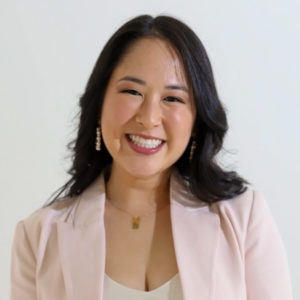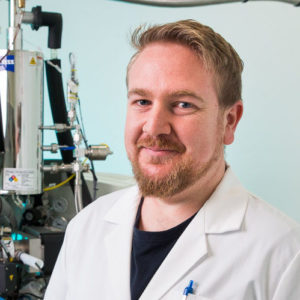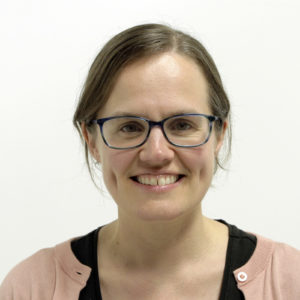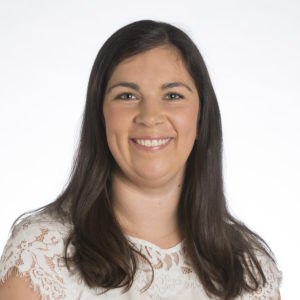Research Infrastructure: Making Discoveries Possible
By Dr Chris Freelance MRSV
This piece appears in the July 2023 edition of Science Victoria magazine. All issues can be read online for free at rsv.org.au/Science-Victoria.
Microscopes with lasers, screens filled with complex equations. These are things we often see in media reports about a scientist’s latest research breakthrough. But behind much of that specialised infrastructure are the people we don’t often see: technical experts who possess specialist knowledge and skills that help other scientists make their research projects a reality.
Many specialist pieces of equipment – such as electron microscopes and mass spectrometers – can be extremely expensive, and require trained staff with comprehensive skills and knowledge. This combination of factors makes it unfeasible for every individual lab that wants to use such equipment to have one for themselves.
Beyond equipment, many research projects also involve the application of techniques that most scientists don’t regularly or routinely use. Instead, those researchers might need to consult with the specialists who can assist them with a tailored approach for their work.
Research Platforms
This is where research infrastructure comes in. At the University of Melbourne alone, we have over 20 different research platforms, each dedicated to a specialised area of research support spanning all areas of science. For example, the microscopy platforms have cutting-edge optical and electron microscopes, which are operated and maintained by experienced microscopists – who also train researchers to use the equipment themselves for their projects. There are also people-based platforms, such as data analysis and statistical consulting platforms, staffed by dedicated experts who assist researchers to use specialised, often complex, models and programs to generate and analyse data.
Many Pathways, Many Roles
The pathways to a career in research infrastructure are as diverse as the research platforms themselves.
Many research platform staff have a research background and a PhD. Some may have developed or refined an analytical technique for their thesis, and others may have simply used a specific technique a lot over the course of their research project.
Rather than being traditional “teaching and research” academics (lecturing and leading research groups), many are considered Academic Specialists, reflecting the specialised nature of their role in performing a specific suite of research-related functions. In their role, they often still undertake academic tasks such as presenting at conferences, teaching, and co-authoring research articles.
Many other platform staff are not ‘academics’, in that they don’t teach classes or have their own research projects. They may have a PhD, but their qualifications depend on what their role involves: for example, some technical officers have a discipline-specific laboratory medicine degree, and others have an Honours or Masters degree with experience in performing histology techniques (histology is the study of the microscopic anatomy of biological tissue).
Not everyone who goes into science wants to do a PhD, and not everyone who does one ends up becoming (or wants to become) a research group leader. Working in industry isn’t for everyone, either. From technical specialists responsible for a specific application, to positions involved in institution-wide strategy, there are diverse roles in research infrastructure. For those who are passionate about specialist scientific techniques, it’s well worth considering a career in research infrastructure where you put your skills to good use making discoveries possible.
Meet some research infrastructure staff from different platforms at the University of Melbourne
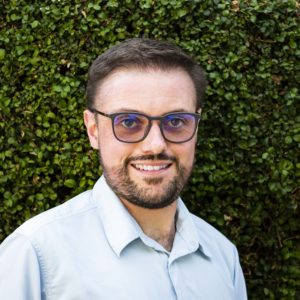 Dr Chris Freelance
Dr Chris Freelance
Manager, Melbourne Histology Platform
While I manage a research histology platform, I am not a histologist by training: I have a background in neuroscience, anatomy and zoology, and a PhD in evolutionary biology. During graduate school, I used a lot of histology and microscopy techniques and worked casually as a histology technical officer. When nearing the end of my PhD, I applied for the role of Platform Manager at the then newly-established Melbourne Histology Platform (biomedicalsciences.unimelb.edu.au/research/services/histology), and got the job. While I still do some science, as the Platform Manager I am responsible for the oversight of human and physical resources, budget, and strategic development. Platform Managers end up being a bit of a “Jack (or Jill) of all trades”: my workday can involve teaching coursework students, giving a seminar, generating invoices, participating in a committee meeting, writing a grant application or research paper, preparing a budget, creating marketing material, or spending time with a researcher to discuss their work, teach them a technique, or look down the microscope. The Histology Platform receives samples from a variety of organisms from diverse projects, from lab-grown organoids used to study disease, to plant roots in studies of nutrient stress in cereal crops, to corals collected for biodiversity conservation research – there are some beautiful views down the microscope! I like having impact beyond my own research as an academic through ensuring that researchers have the necessary expertise and infrastructure available to them through the Histology Platform.
Emily Gracie
Histologist, Phenomics Australia at The University of Melbourne
I am a histologist and mouse pathobiologist at the Phenomics Australia Histopathology and Slide Scanning Service (biomedicalsciences.unimelb.edu.au/departments/anatomy-and-physiology/research/services/phenomics-australia-histopathology-and-digital-slide-service) which is based at The University of Melbourne and is funded by the federal government (NCRIS). I provide support and expertise to improve biomedical research outcomes, helping to prepare and view slides of mouse tissue.
I completed an Associate Degree of Applied Science and a Bachelor of Biomedical Science (Laboratory Medicine) majoring in Clinical Biochemistry and Medical Microbiology. As part of my studies, I had a placement with the Phenomics Australia Histopathology and Slide Scanning Service at The University of Melbourne, and at The Royal Children’s Hospital in Molecular Microbiology. It was a fantastic experience to obtain real-world laboratory experience and to work in both a research and diagnostic field.
I chose to officially work at Phenomics Australia because I can work on projects from the beginning to the end. I now work with an expert team of mouse pathobiologists and pathologists, which has increased my independent and critical thinking while learning new techniques. I am constantly discovering new things about mouse tissue, disease, and cells. My daily workload is varied, which keeps me active and relevant to the ever-changing research sector.
Dr Anders Barlow
Academic Specialist, Materials Characterisation and Fabrication Platform
I am an Academic Specialist within the Materials Characterisation and Fabrication Platform (MCFP) (eng.unimelb.edu.au/nanomaterials) at the University of Melbourne where I manage a variety of research infrastructure and laboratory spaces. After completing a PhD in physics at Flinders University, I spent four years in the UK at a surface analysis facility dedicated to supporting researchers with cutting-edge capabilities. This is where I really found my passion for collaborating on multiple projects across a broad range of research areas, rather than a single project of my own. Returning to Australia, I spent some time at a similar facility in Melbourne before joining the MCFP in 2018.
I continue to explore many new research topics with our colleagues, from energy storage and harvesting, to antimicrobial research, to art and heritage conservation. This variety means that I am constantly finding new ways to apply our research infrastructure capability at the MCFP to help solve our collaborators’ challenges. Additionally, being a member of the Victorian node of The Australian National Fabrication Facility (ANFF), I am involved in the absolute cutting-edge of Australia’s nanofabrication capability, such as developing quantum computing technology, and the fabrication of nanoscale sensors and devices using the MCFP’s helium ion microscope – one of only four in Australia. I am exactly where I want to be in my career: always learning, constantly being exposed to new research, and ever excited by the next amazing piece of infrastructure we can use to help our research cohorts in Australia.
Dr Sandy Clarke-Errey
Consultant, Statistical Consulting Centre
There were so many things that I wanted to study when I came to the University of Melbourne for a B.Sc, making it hard to choose. I only stumbled upon statistics because the probability pre-requisite subject sounded interesting, but I found that it satisfied both my appreciation for the beauty of mathematics and my desire to pursue an area with clear practical applications. The opportunity to do a small research project with the Statistical Consulting Centre (scc.ms.unimelb.edu.au/) came up, and I loved the project as well as the workplace and colleagues. I took the opportunity to apply for a job they were offering after graduation and haven’t left since. I was also able to complete a PhD whilst maintaining a part-time position, which further confirmed that I prefer more applied work. Most researchers end up travelling the world and working in different places, but I have been very content in this role because of the diversity of projects and applications. I am always working on several projects at a time, including assisting research students and staff at the University, supporting clinical trials for our affiliate hospitals, and preparing reports and reviews for various government agencies and industry partners.
Dr Lauren Hyde
Research Infrastructure Development Manager
I have always had a passion for research infrastructure. Throughout my PhD I was drawn to the equipment side of my research and always jumped at the opportunity to learn a new analytical technique to incorporate into my project. Since then, I have gravitated towards several infrastructure-related roles, managing and working in several leading research institutions and national facilities, most significantly as a leading contributor to the establishment and success of the Materials Characterisation and Fabrication Platform at the University of Melbourne. As the Platform Manager, I provide a supportive environment for researchers to extract the best results for their research project, from a crystal-clear image to the development of a new method. My passion rapidly evolved to elevating the professionalism of platform operations, promotion of its capabilities, and supporting the staff that provided these expert services and support. I started by participating in working groups that drove a small infrastructure-related initiative such as access management or professional development program for platform staff, and then officially transitioned into an operations strategy role. As the Research Infrastructure Development Manager, I am contributing to the Research Infrastructure ecosystem from a strategic and operational perspective, and I love it! While I still manage to sneak into the lab from time to time, every day I am driving the change to improve the coordination, discoverability, and efficiency of the research infrastructure across the university and being an advocate for the expert staff that operate these world-class Research Platforms.


